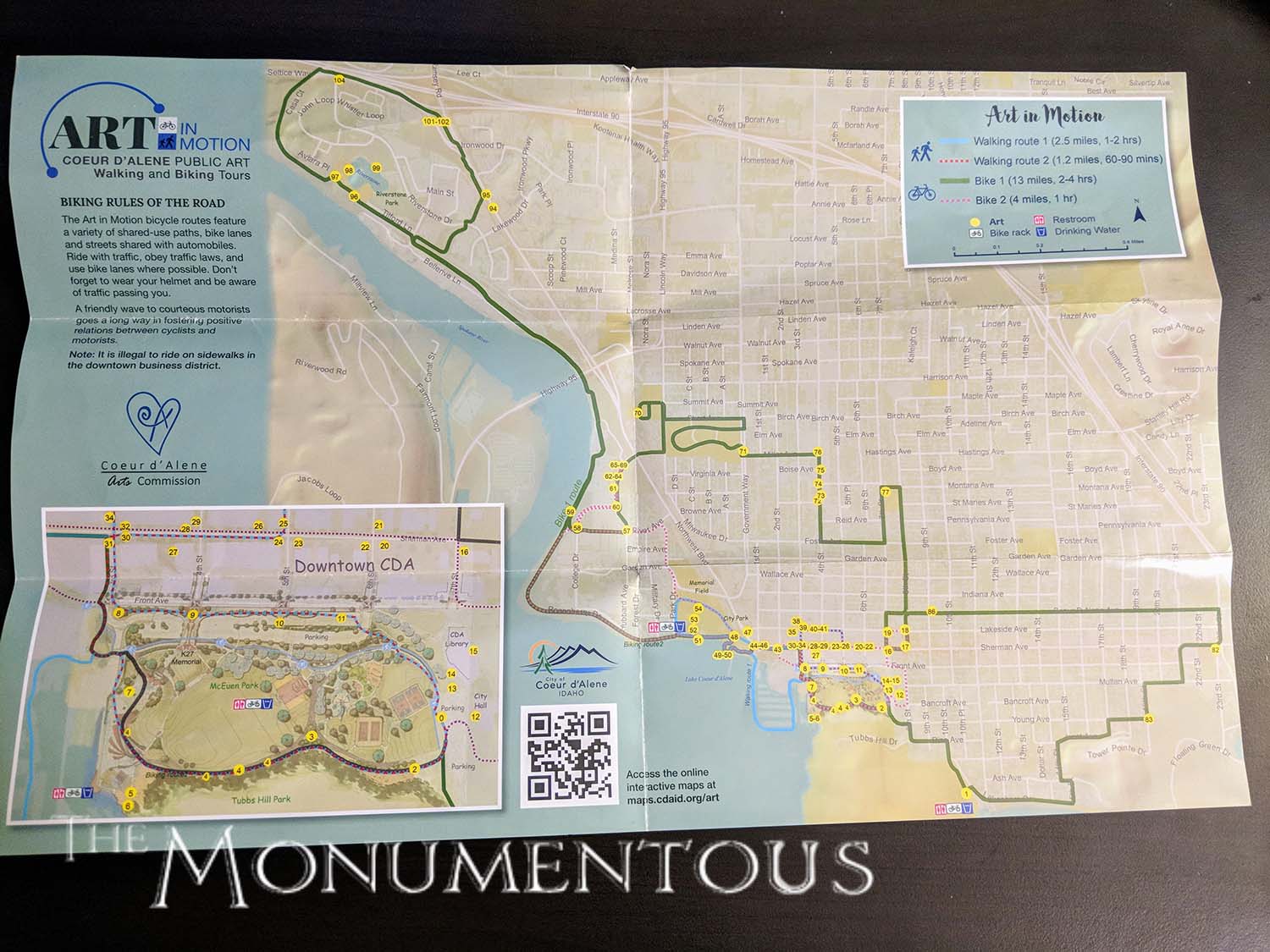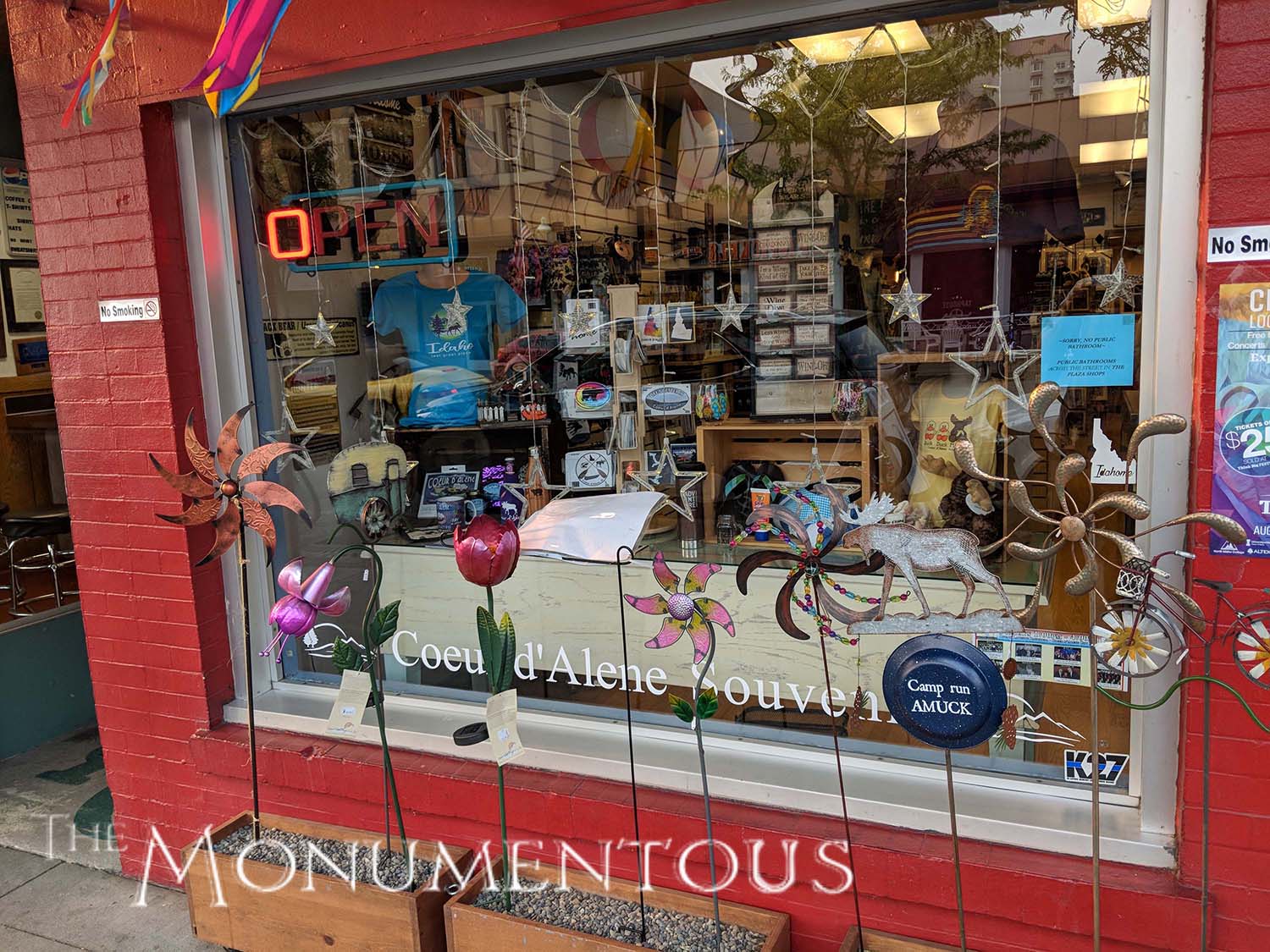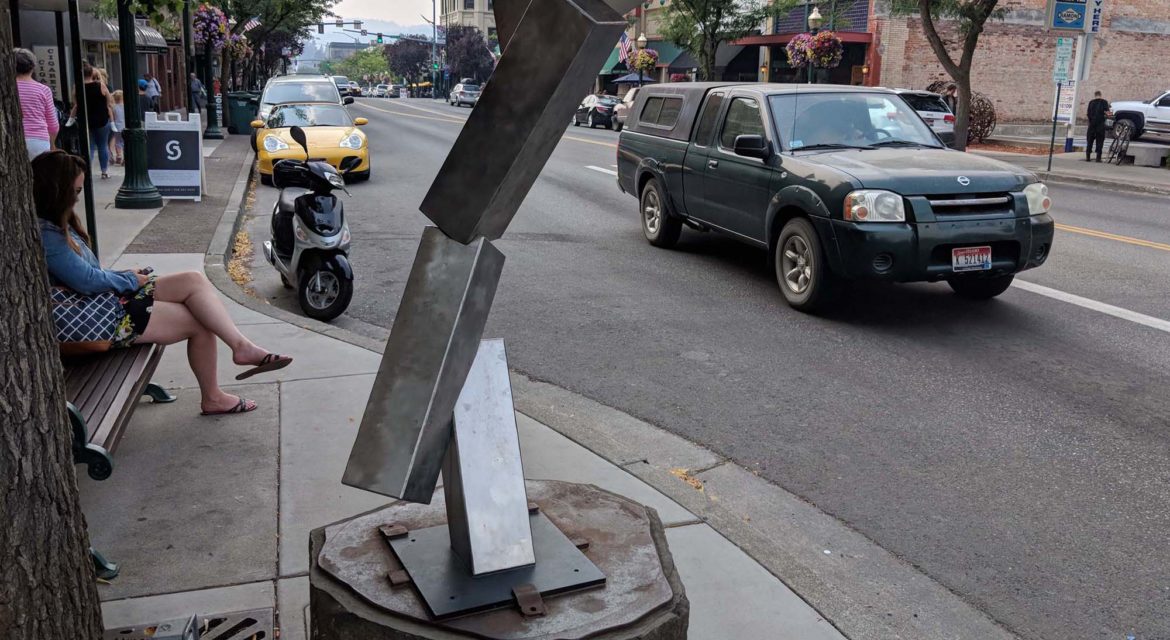
The City of Coeur d’Alene, Idaho, is surrounded by forest, mountains and has become known for water sports on Lake Coeur d’Alene. While there are numerous ways to experience the wonders of the natural surroundings of the area, a commitment to enhancing the growth of industry and commerce for the city have led to the creation of a Public Art Walking Tour that has created an experience just as essential for both residents and tourists.

Art that Defines and Distinguishes the Community
The Coeur d’Alene Arts Commission is focused on stimulating the presentation of fine arts as well as public interest participation in such exhibitions. That focus is highlighted in various ways throughout the Coeur d’Alene Public Art Tour. With a physical map that outlines over 100 pieces of public art that are all within walking distance of each other as well as a digital version that is even more complete, it’s easy to both appreciate the art that’s on display and also interact with it.
The art along the Public Art Tour was driven by a desire to see the Coeur d’Alene community defined and distinguished, and that’s something that can be seen across the Public Art, Utility Box Art and Bike Rack Art pieces that comprise the Walking Tour. All of these pieces are in accessible locations where people can see and interact with them, and they’re designed to naturally integrate into these public spaces directly and indirectly.

The art on the Walking Tour incorporates various art media styles and themes while taking on numerous abstract and figurative forms. As an example of this variety in form, “Last One In” is a sculpture showing a boy swinging on a rope, while “The Ancestors” features three wood beams mounted on three stone bases. This assortment and placement of pieces that are sometimes only a few feet from one another welcomes and encourages multiple interpretations individually and collectively.
The Utility Box Art and Bike Rack Art use the concept of integration into public spaces in a much more literal way, since what would otherwise just be a utility box or bike rack are literal pieces of art along the Walking Tour. These pieces showcase what it means to take the simple or mundane and turn it into something so much more. The effort has served as a model for other communities interested in introducing their own public art programs while also making a sizable impact on the economics and culture of Coeur d’Alene.

Driving Economic Opportunities to and for Coeur d’Alene
 While providing adequate funding for the Coeur d’Alene Public Art Walking Tour was always a goal, the details associated with doing so can often be a challenge for communities large and small. Sponsorship opportunities on the Walking Tour have helped ease some of these challenges, but they aren’t the only economic opportunities that the Walk has directly and indirectly created. Critically, these opportunities are ones that a variety of stakeholders have been able to apply.
While providing adequate funding for the Coeur d’Alene Public Art Walking Tour was always a goal, the details associated with doing so can often be a challenge for communities large and small. Sponsorship opportunities on the Walking Tour have helped ease some of these challenges, but they aren’t the only economic opportunities that the Walk has directly and indirectly created. Critically, these opportunities are ones that a variety of stakeholders have been able to apply.
Many of the pieces of art along the Walking Tour are for sale with prices prominently displayed. As pieces are sold and replaced, new pieces are sought throughout the year, which allows artists to showcase and sell their work in a powerful way. The ability for visitors to buy such pieces of art is also unique and allows city stakeholders to utilize a funding model that works for everyone. The constant rotation of pieces also gives visitors who have already experienced the Walk another reason to see it again.
Because these pieces of art are often moved and replaced, the ability to sell items or other collectibles associated with individual pieces is somewhat limited, although there are a variety of shops and stores throughout the area that would provide an ideal place to sell such items. Other attractions and Walking Tours have greatly benefitted from the sale of such items to enable new developments. However, these potential developments mean little when compared to the way the Coeur d’Alene Public Art Walking Tour has already impacted the entire community.

Extending Public Art Across Coeur d’Alene

One of the guiding principles of the Walking Tour was to gradually extend the public art from the downtown core into all corners of the city. Doing so hasn’t just expanded the reach of the Walk itself, but has also provided more access to numerous attractions throughout the area. The Walk brings participants up to and through attractions like McEuen Park as well as the Coeur d’Alene Resort Floating Boardwalk, which is the longest floating boardwalk in the world.
It also highlights and exposes people to less prominent features in the city, which includes attractions like the Mudgy Moose Trail that features five life-size bronze statues positioned at locations where Mudgy pauses in his search for Millie. Viewers are also exposed to pieces that are not a part of the City of Coeur d’Alene public art collection. Various businesses that are along the Walking Tour take advantage of the additional foot traffic by directly inviting participants into their establishments.
The impact of the Walk for the community can be seen in more direct ways as well, with certain pieces along the Walking Tour dedicated or in commemoration of an individual person or event. These pieces have come to drive public interest and participation in a different way than many of the other abstract and figurative forms on the Walking Tour.
The Walking Tour is also designed to link public art to Coeur d’Alene’s most important community events. Temporary exhibitions, announcements of art selections and the unveiling of new commissions have coincided with major events like Art on the Green. Doing so has proven to attract audiences near and far and expanded the reach for such events. That influence is just part of the legacy the Walking Tour it has come to represent though.

Icons of a Legacy

The pieces on the Coeur d’Alene Public Art Walking Tour were selected to both capture the public’s attention and to make an impression on viewers, and they all do so in different ways. These impressions have enabled some of the pieces to become icons for the city and region, all of which have provided the icons of a legacy that will endure even longer than pieces that were made to withstand the climate extremes of Coeur d’Alene.

